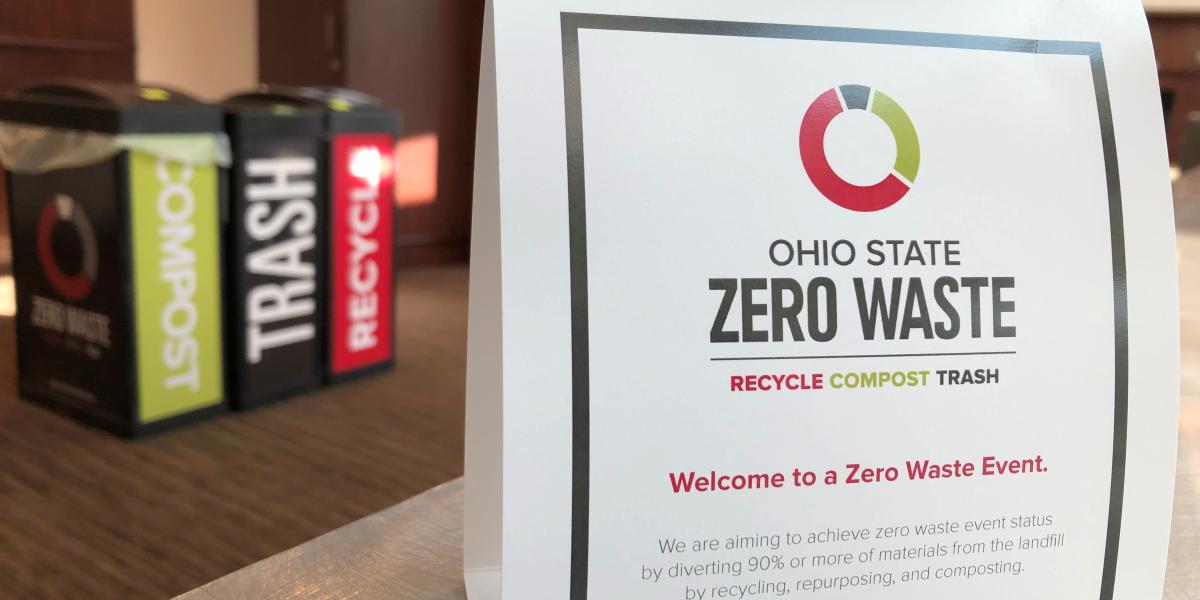Compost. Trash. Recycle. The Ohio State University Board of Trustees followed three simple steps in an effort to make its November meeting a zero waste event in support of the university’s overall sustainability goals.
Zero waste is defined as diverting 90% or more of waste from the landfill. Ohio State’s goal is to become a zero waste campus through recycling, compost and reuse by 2025.
“We hope that today marks the first official zero waste Board of Trustees meeting,” said Mary Leciejewski, zero waste manager with Ohio State’s Facilities Operations and Development. “We’ve made operational changes to eliminate as much non-recyclable plastic as possible with the addition of reusable silverware and compostable plates.”
Ohio State’s Board of Trustees meet quarterly to discuss university business. The two-day event holds six committee meetings and concludes with a full board session. It is open to the general public and routinely hosts more than 100 attendees each day.
Signage and student educators dotted the main floor of the Longaberger Alumni House on Wednesday and Thursday to show attendees how to properly dispose of waste at designated stations. At the conclusion of the event, FOD will compost and recycle as much of the material as possible and perform a final audit.
“Although the changes here today may seem small, they serve more than a symbolic purpose,” Leciejewski said. “Zero waste events are a testing ground that inform us of changes we need to make to meet the zero waste goal.”
FOD hosts more than 25 zero waste events each year. A behind-the-scenes pilot was performed during the August board meetings with the help of Longaberger staff. The meeting achieved nearly a 75% diversion rate, narrowly missing the 90% target. Forty-three pounds of material was composted, 14.4 pounds of material was recycled, while 19.8 pounds of material was sent to the landfill.
In fiscal year 2019, Ohio State achieved a 31.3% diversion rate on the Columbus campus. Ohio State is expanding organics and recycling collections, while purchasing more environmentally preferred products that can be diverted from landfill or eliminate waste streams altogether.
Additional zero waste highlights include:
- With the support of a Sustainability Fund grant, FOD is replacing paper towels with hand dryers in at least 29 buildings, a move expected to reduce waste by more than 550 tons annually.
- The Ohio State University Wexner Medical Center has transformed its purchasing moving forward to include up to 72% of clinical supplies and products that meet Environmentally Preferred Purchasing standards that include a shift toward products made from recycled material.
- Expanding behind-the-scenes composting in dining locations across campus.
- Continuing to grow a zero waste culture through events, education and research projects. Ohio Stadium is the largest stadium in the country to continuously achieve zero waste status and has ranked No. 1 in diversion rate within the Big Ten conference for the past seven years.

